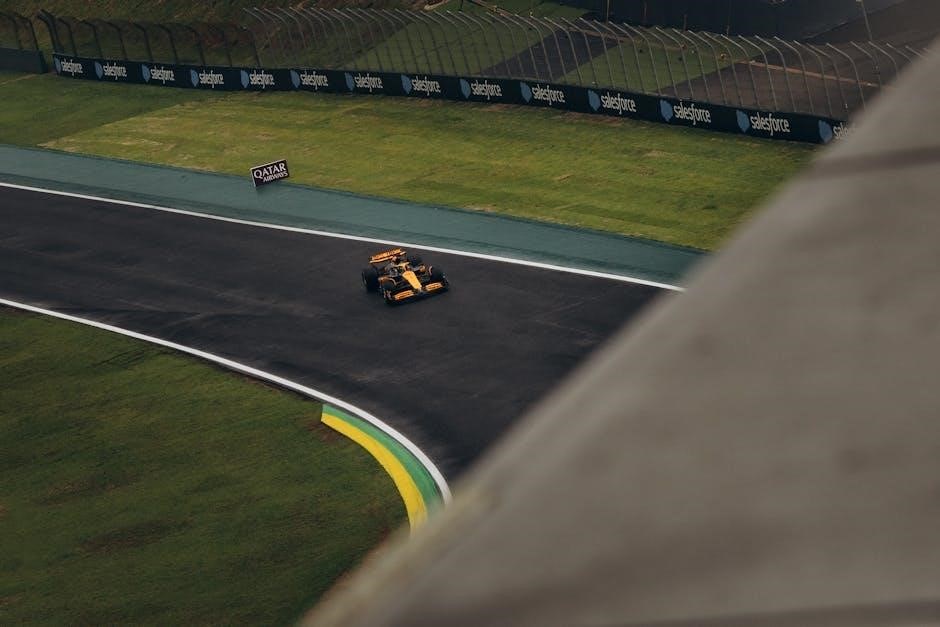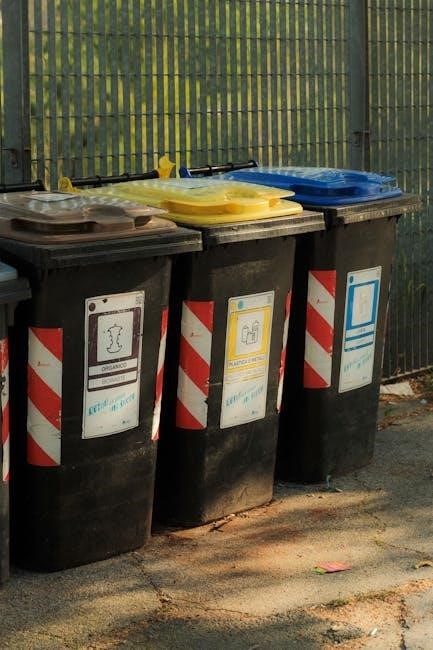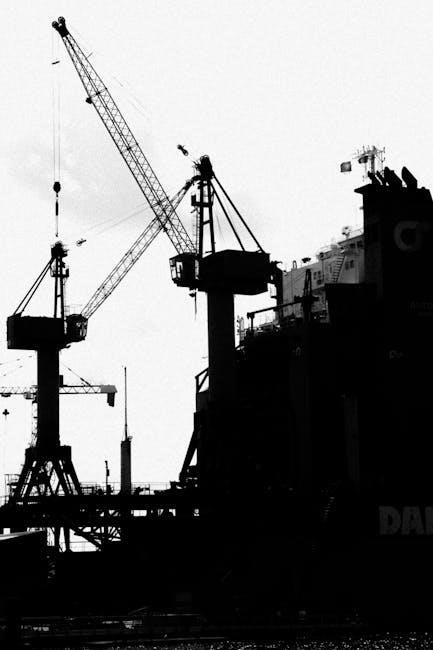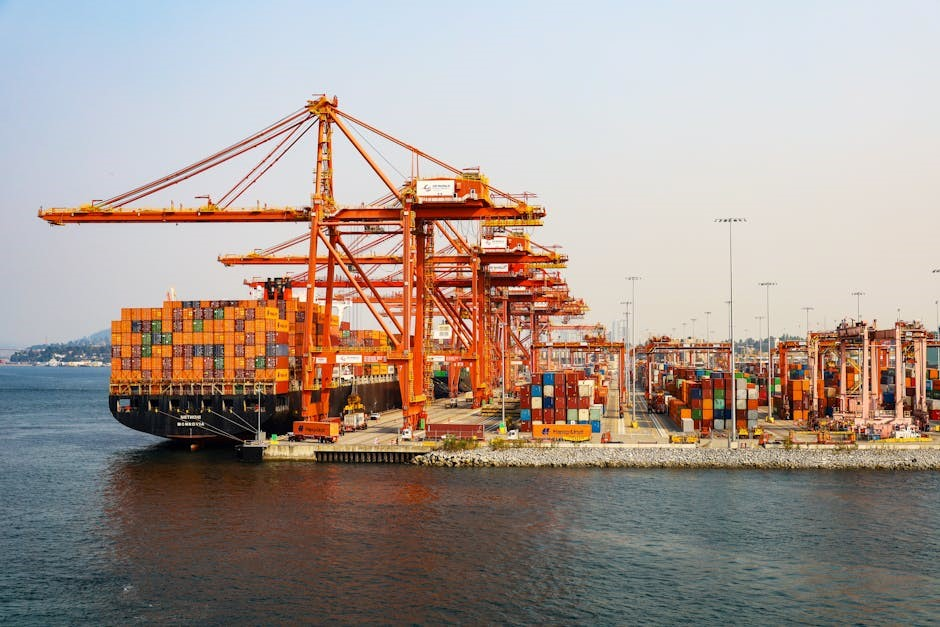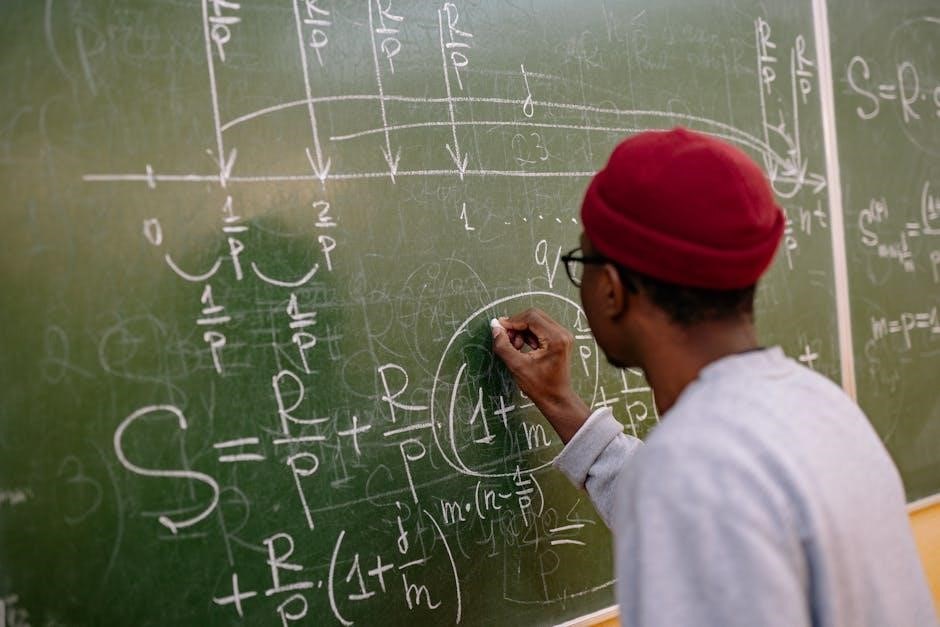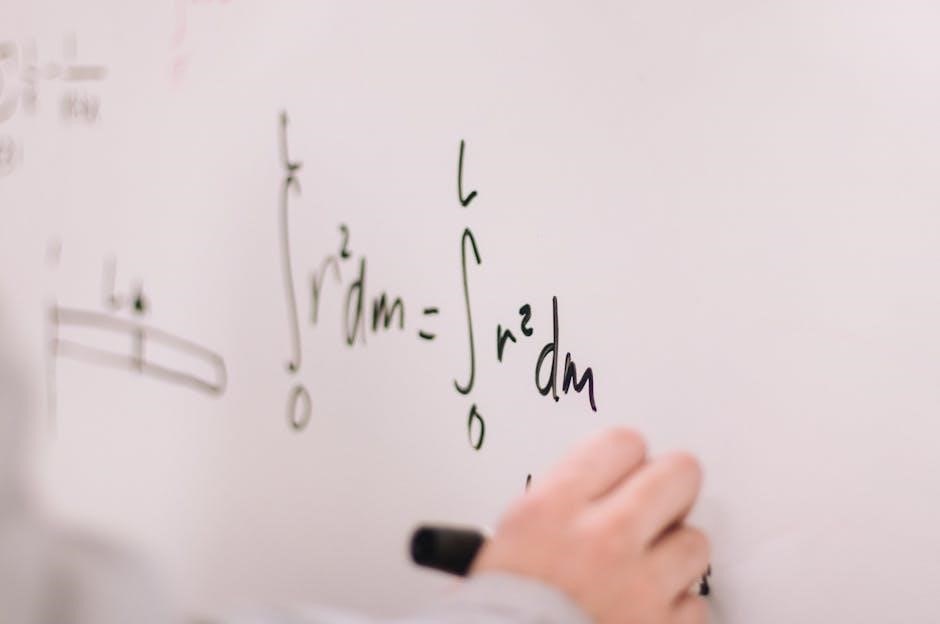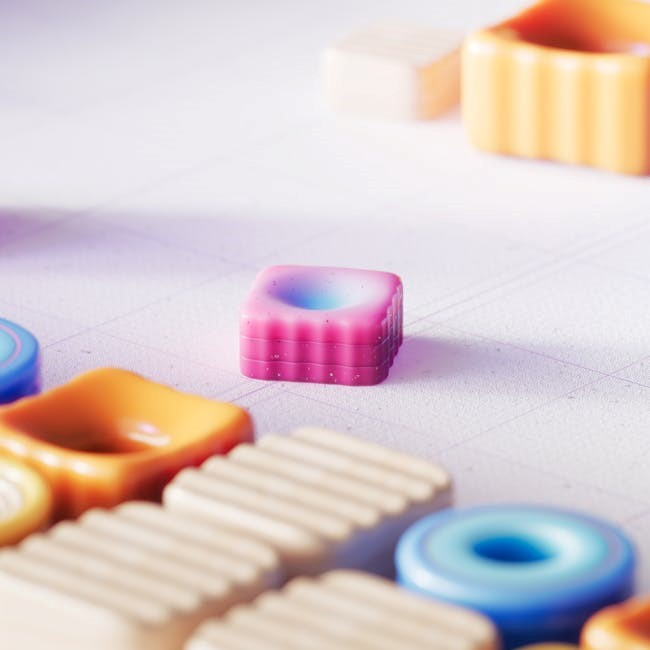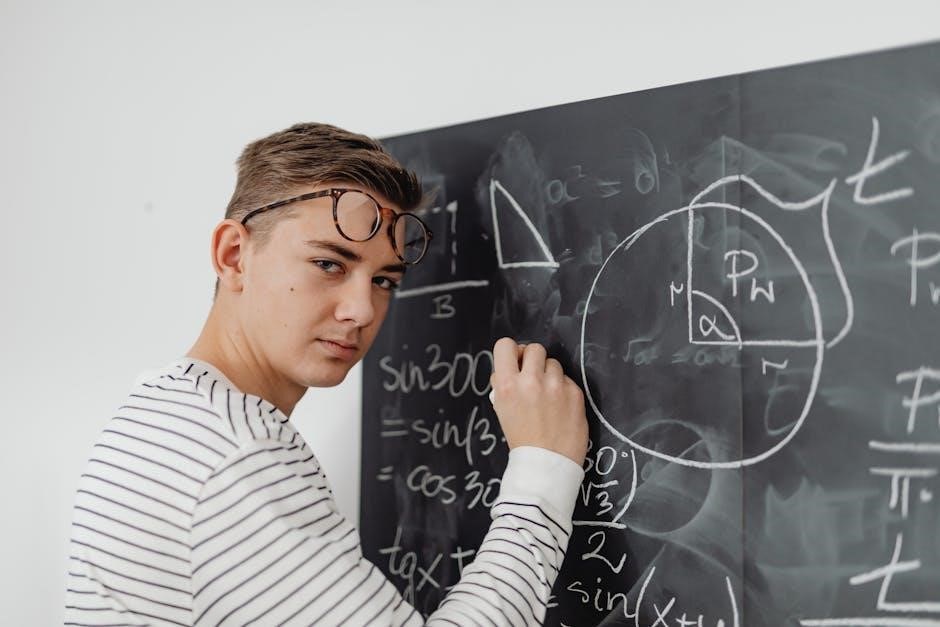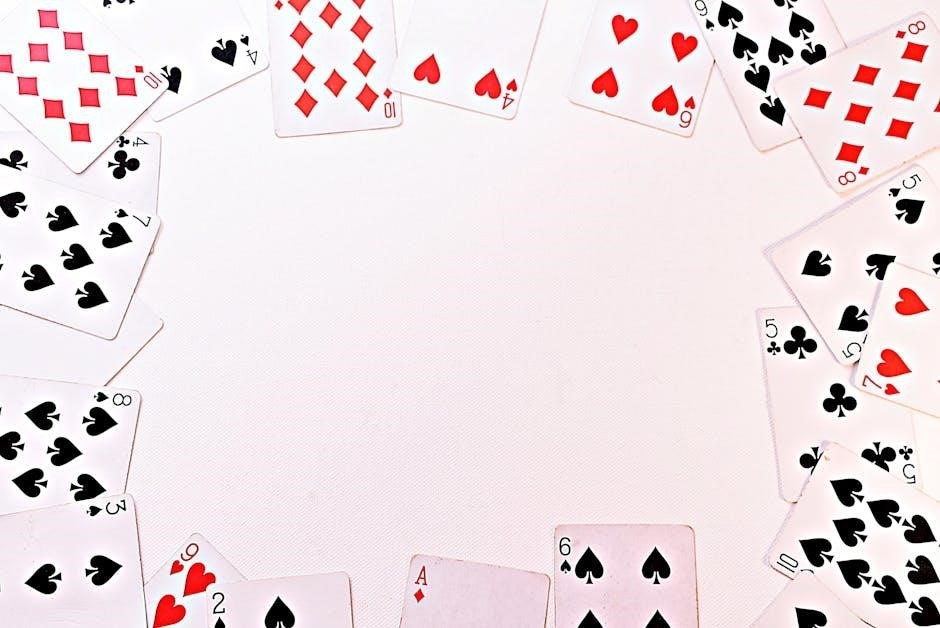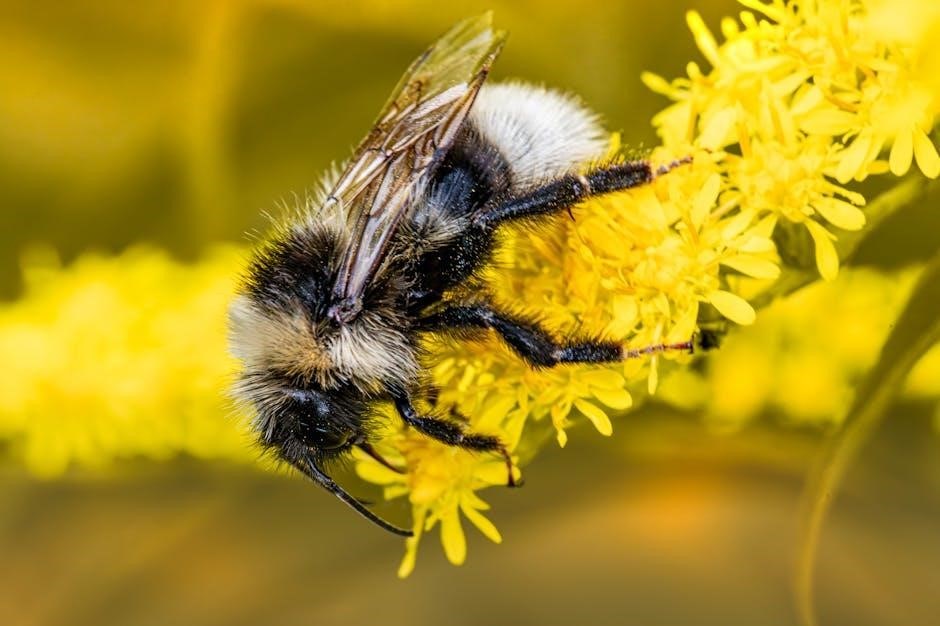This comprehensive study guide accompanies The Pilgrim’s Progress‚ offering a 12-week structured approach for deeper understanding. Designed for individuals or small groups‚ it includes Scripture references‚ explanatory notes‚ and discussion questions to enhance spiritual growth and community engagement.
1.1 Overview of the Study Guide
The Pilgrim’s Progress Study Guide is a 12-week resource designed to deepen understanding of John Bunyan’s classic allegory. It includes Scripture references‚ explanatory notes‚ and illustrative materials to enhance study. Perfect for small groups or individual use‚ the guide provides context and summaries to aid comprehension. Each section is structured to explore themes‚ symbols‚ and spiritual growth‚ making it an invaluable tool for those seeking to engage deeply with the text. The guide also offers discussion questions to foster reflection and community engagement‚ ensuring a meaningful journey through The Pilgrim’s Progress.

1.2 Purpose of the Study Guide
The primary purpose of the Pilgrim’s Progress Study Guide is to facilitate a deeper understanding and spiritual application of John Bunyan’s timeless allegory. It serves as a companion resource‚ helping readers navigate the rich symbolism and theological themes present in the text. By providing structured weekly breakdowns‚ key theme analyses‚ and reflective discussion questions‚ the guide aims to enhance both individual and group study experiences. Its ultimate goal is to inspire spiritual growth‚ foster meaningful conversations‚ and help readers apply the book’s teachings to their daily lives‚ drawing closer to God through the journey of faith.
1.3 Target Audience

The Pilgrim’s Progress Study Guide is designed for a diverse audience‚ including individual readers‚ small groups‚ and Bible study classes. It caters to those seeking a deeper understanding of John Bunyan’s classic allegory‚ offering resources for both personal reflection and communal discussion. The guide is particularly beneficial for Christians looking to enrich their spiritual journey‚ as well as educators and leaders aiming to facilitate meaningful conversations. Its accessible structure makes it suitable for readers of various ages and backgrounds‚ ensuring that everyone can engage with the timeless themes of faith and redemption.
Historical Context of “The Pilgrim’s Progress”
Written by John Bunyan in the 17th century‚ The Pilgrim’s Progress reflects the religious and political climate of his time‚ offering timeless spiritual truths through allegory.
2.1 Authorship and Publication
The Pilgrim’s Progress was authored by John Bunyan‚ a prominent Puritan preacher‚ during his imprisonment in the 17th century. The book was first published in 1678 and quickly gained popularity for its allegorical depiction of the Christian journey. Bunyan’s unique style blended spiritual truths with relatable characters‚ making it accessible to a wide audience. The original title‚ The Pilgrim’s Progress from This World to That Which Is to Come‚ reflects its enduring theme of spiritual pilgrimage. Its publication marked a significant milestone in Christian literature‚ solidifying its place as a timeless classic.
2.2 Historical Significance
The Pilgrim’s Progress holds a revered place in Christian literature‚ serving as a foundational allegory for the spiritual journey. Written during a time of religious persecution‚ it reflects the Puritan values of Bunyan’s era‚ offering hope and guidance to believers. Its enduring popularity has made it a cornerstone of Christian theology‚ influencing countless readers and shaping religious thought for centuries. The book’s historical significance lies in its ability to transcend time‚ remaining a powerful tool for spiritual reflection and growth‚ even in modern times.
2.3 Cultural Impact
The Pilgrim’s Progress has left an indelible mark on Christian culture‚ inspiring countless adaptations and interpretations. Its timeless themes of faith and perseverance resonate across generations‚ making it a beloved resource for spiritual growth. The study guide enhances this impact by providing structured learning tools‚ such as Scripture references and discussion questions‚ tailored for modern audiences. Its adaptability to small groups and individual study has cemented its role in fostering community engagement and personal reflection‚ ensuring its relevance in contemporary cultural and religious contexts.

Structure of the Study Guide
The guide is organized into a 12-week format‚ offering weekly breakdowns‚ key themes‚ Bible references‚ and discussion questions. It includes explanatory notes and illustrative materials to enhance understanding and application.
3.1 Weekly Breakdown

The study guide divides The Pilgrim’s Progress into a 12-week structured plan‚ ensuring a gradual and immersive exploration of the text. Each week focuses on specific chapters‚ themes‚ and spiritual lessons‚ providing readers with a clear roadmap for understanding. This breakdown allows for a balanced pace‚ enabling participants to reflect deeply on each section without feeling overwhelmed. The weekly structure also incorporates discussion questions and Bible references‚ fostering both personal reflection and group engagement. This methodical approach ensures a comprehensive and meaningful journey through Bunyan’s timeless allegory.
3.2 Key Themes and Symbols
The study guide explores the rich themes of The Pilgrim’s Progress‚ such as the metaphor of pilgrimage‚ spiritual growth‚ and redemption. It delves into symbols like the celestial city‚ representing heaven‚ and the burden‚ signifying sin. These elements are analyzed to deepen understanding of Bunyan’s allegory. The guide also examines trials and temptations‚ highlighting their role in Christian perseverance. By unpacking these themes and symbols‚ readers gain insight into the spiritual journey‚ making the study guide a valuable tool for personal and group reflection‚ enhancing the appreciation of Bunyan’s timeless masterpiece.
3.3 Bible References and Explanations
The study guide enriches understanding by aligning The Pilgrim’s Progress with biblical teachings. It includes numerous Scripture references‚ such as Psalms and the Gospels‚ to highlight spiritual truths. Explanatory notes provide context for each reference‚ connecting the allegory to real-life Christian experiences. This section helps readers grasp how Bunyan’s narrative reflects biblical principles‚ offering deeper insights into themes like redemption and perseverance. By integrating Scripture‚ the guide bridges the classic tale with modern faith‚ making it a powerful tool for spiritual growth and biblical application in personal or group study settings.
3.4 Discussion Questions
The study guide includes thought-provoking discussion questions to encourage reflection and application. These questions help readers connect the allegory to their personal faith journeys‚ fostering deeper understanding. They explore themes like spiritual growth‚ trials‚ and redemption‚ prompting participants to share insights and experiences. Designed for individual or group use‚ these questions facilitate meaningful conversations and practical application of the book’s teachings. By engaging with these inquiries‚ readers can gain a richer grasp of Bunyan’s message and its relevance to modern Christian living‚ enhancing their study experience and spiritual growth.
Key Themes in “The Pilgrim’s Progress”
The study guide explores central themes like pilgrimage as a metaphor for life‚ spiritual growth‚ overcoming trials‚ and the pursuit of redemption‚ enriching readers’ understanding.
4.1 The Metaphor of Pilgrimage
The Pilgrim’s Progress uses pilgrimage as a powerful metaphor for the Christian life‚ emphasizing journey‚ perseverance‚ and spiritual growth. The study guide highlights how this metaphor reflects the universal human quest for meaning and redemption. By exploring Bunyan’s allegory‚ readers gain insights into the challenges and triumphs faced by believers. The guide’s structured approach‚ including weekly breakdowns and discussion questions‚ helps deepen understanding of this timeless metaphor‚ making it relevant for modern readers seeking to apply its lessons to their own spiritual journeys.
4.2 Spiritual Journey and Growth
The Pilgrim’s Progress vividly portrays the Christian life as a transformative spiritual journey. The study guide explores how the protagonist’s experiences mirror believers’ growth‚ emphasizing faith‚ repentance‚ and perseverance. Through Scripture references and explanatory notes‚ readers gain insights into overcoming trials and maturing in faith. Discussion questions encourage personal reflection‚ helping individuals apply the book’s lessons to their own spiritual paths. This structured approach fosters a deeper understanding of spiritual growth‚ making the guide invaluable for those seeking to enrich their faith journey and live out biblical truths in daily life.
4.3 Trials and Temptations
The Pilgrim’s Progress vividly illustrates the Christian’s struggle with trials and temptations. The study guide examines how the protagonist faces challenges like the Slough of Despond and Vanity Fair‚ symbolizing real-life spiritual battles. Through explanatory notes and Bible references‚ readers explore how faith is tested and strengthened. Discussion questions prompt reflection on personal struggles‚ encouraging believers to apply biblical truths. This section emphasizes perseverance and trust in God‚ offering practical insights for overcoming life’s temptations and trials‚ making it a powerful tool for spiritual resilience and maturity.
4.4 Redemption and Salvation
The Pilgrim’s Progress study guide delves into the central theme of redemption and salvation‚ highlighting the protagonist’s journey toward spiritual deliverance. Through Bible references and explanatory notes‚ the guide explores how the cross symbolizes redemption and how faith in Christ leads to salvation. Discussion questions prompt readers to reflect on their own spiritual journeys and the significance of God’s grace. The study guide emphasizes the ultimate goal of salvation‚ illustrated by the pilgrim’s arrival at the Celestial City‚ reinforcing the message of hope and eternal life through Christ.
Bible Study Elements
The study guide includes Scripture references‚ explanatory notes‚ and illustrative materials to deepen understanding of the biblical context and themes within The Pilgrim’s Progress.
5.1 Scripture References
The study guide integrates Scripture references throughout‚ aligning with key themes in The Pilgrim’s Progress. These references are carefully selected to enhance understanding of Christian doctrine and spiritual growth. Each week’s section includes relevant biblical passages‚ such as those on redemption‚ faith‚ and perseverance. For example‚ references to the Prodigal Son (Luke 15) and the narrow gate (Matthew 7:13-14) are used to illustrate spiritual journeys and trials. These Scriptures provide a biblical foundation‚ helping readers connect the allegory to real-life applications and deepen their faith. The guide ensures a seamless blend of literature and theology.
5.2 Explanatory Notes
The study guide provides explanatory notes to clarify complex themes‚ symbols‚ and biblical allusions in The Pilgrim’s Progress. These notes offer insights into the allegorical meanings of characters like Christian‚ Faithful‚ and Hopeful‚ as well as locations such as the Wicket Gate and the Celestial City; By breaking down these elements‚ the guide helps readers understand Bunyan’s theological message. For instance‚ notes explain how the journey mirrors the Christian walk‚ emphasizing themes like redemption and perseverance. These explanations enrich comprehension‚ making the classic text accessible to modern readers while preserving its spiritual depth and relevance.
5.3 Illustrative Materials
The study guide includes illustrative materials such as diagrams‚ charts‚ and images to visually enhance understanding of key themes and symbols in The Pilgrim’s Progress. These visuals help readers grasp complex allegorical elements‚ like the journey from the Wicket Gate to the Celestial City. Illustrations of characters such as Christian‚ Faithful‚ and Hopeful provide a clearer connection to their roles in the narrative. Additionally‚ maps of the pilgrimage route and depictions of symbolic objects‚ like the burden on Christian’s back‚ make the story more engaging and accessible‚ aiding in both individual and group study settings. These materials enrich the learning experience‚ ensuring deeper engagement with Bunyan’s timeless allegory.
Small Group Study Resources

The study guide offers group discussion guides‚ reflection exercises‚ and practical activities to deepen understanding. These resources help groups engage with the text‚ fostering meaningful conversations and spiritual growth.
6.1 Group Discussion Guides
The study guide provides structured group discussion guides to facilitate meaningful conversations. Each session includes thought-provoking questions‚ reflection exercises‚ and activities that encourage deeper engagement with the text. These resources help participants explore key themes‚ relate the allegory to personal experiences‚ and apply spiritual lessons to daily life. The guides also offer practical tips for leaders to create an inclusive and interactive environment‚ ensuring everyone contributes and learns collectively. This section is essential for small groups aiming to maximize their understanding and spiritual growth through collaborative study and discussion.
6.2 Activities and Exercises
The study guide includes a variety of engaging activities and exercises designed to deepen understanding and application of The Pilgrim’s Progress. These include reflection exercises‚ creative tasks‚ and practical applications that connect the allegory to real-life experiences. Participants are encouraged to explore themes through journaling‚ group projects‚ and interactive discussions. The exercises are tailored to help individuals and groups apply spiritual lessons‚ fostering personal growth and a stronger connection to the text. These activities make the study dynamic and meaningful‚ ensuring active participation and lasting impact.
6.3 Reflection and Application
Reflection and application are central to the study guide‚ helping participants connect The Pilgrim’s Progress to their personal spiritual journeys. Through guided journaling‚ prayer‚ and thoughtful exercises‚ individuals are encouraged to explore how the allegory applies to their lives. Group discussions also provide a space for sharing insights and experiences‚ fostering a deeper understanding of the text. These reflective practices aim to bridge the gap between the story and real-life challenges‚ enabling participants to apply spiritual truths practically and meaningfully in their daily lives. This section emphasizes personal growth and transformative learning.
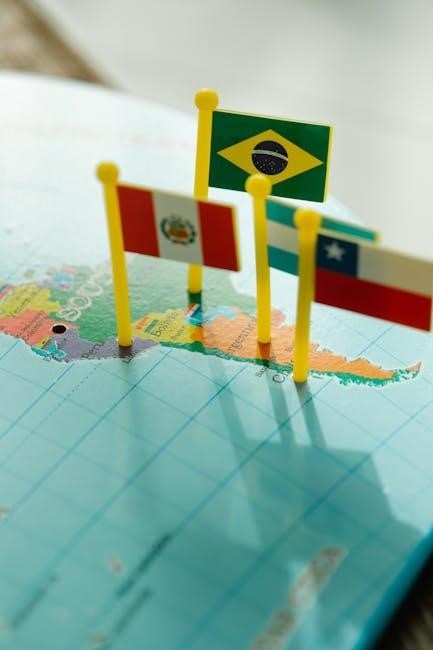
The Role of the Guide in Understanding the Book
The guide provides contextual insights‚ character analysis‚ and symbolic explanations‚ enhancing readers’ comprehension of The Pilgrim’s Progress and its spiritual themes.
7.1 Contextual Analysis
The study guide offers a detailed contextual analysis of The Pilgrim’s Progress‚ providing historical and cultural insights into John Bunyan’s 17th-century masterpiece. It explores the author’s intent‚ the allegorical structure‚ and the religious climate of the era. By examining the historical backdrop‚ readers gain a deeper understanding of the book’s themes and symbols‚ such as the journey from the City of Destruction to the Celestial City. This analysis bridges the gap between the original text and modern readers‚ making the story’s timeless message more accessible and relatable for personal reflection and group discussion.
7.2 Character Insights
The study guide provides profound character insights‚ delving into the motivations and spiritual journeys of figures like Christian‚ Faithful‚ and Hopeful. It examines their struggles‚ triumphs‚ and relationships‚ offering a deeper understanding of their roles in the allegory. By analyzing these characters‚ readers can better grasp the universal themes of faith‚ perseverance‚ and redemption. The guide also highlights lesser-known characters‚ revealing their symbolic significance and how they contribute to the narrative’s richness. These insights enable readers to connect with the characters on a personal level‚ fostering meaningful reflection and application in their own spiritual walks.
7.3 Symbolism and Allegory
The study guide explores the rich symbolism and allegory in The Pilgrim’s Progress‚ uncovering deeper spiritual truths. It examines key symbols like the Celestial City‚ the Valley of the Shadow of Death‚ and the River of Death‚ linking them to biblical themes. The guide also deciphers the allegorical meanings of characters and events‚ such as Christian’s burden and the Interpreter’s role. By breaking down these elements‚ readers gain a clearer understanding of Bunyan’s vision and the universal journey of faith‚ redemption‚ and eternal life. This section enhances the reader’s ability to interpret and apply the allegory personally.
Benefits of Using the Study Guide
The study guide enhances understanding of The Pilgrim’s Progress‚ fostering spiritual growth through structured learning. It encourages community engagement and deeper reflection‚ making the allegory relatable and applicable to daily life.
8.1 Enhanced Understanding
The study guide clarifies complex themes in The Pilgrim’s Progress‚ offering detailed summaries and explanatory notes. By breaking down allegorical elements‚ it provides clarity on Christian doctrines and spiritual journeys. Scripture references and illustrative materials further enrich comprehension‚ making the text accessible to modern readers. The structured format ensures a deeper grasp of Bunyan’s message‚ while discussion questions prompt critical thinking. This resource transforms the classic tale into a relatable guide for spiritual exploration‚ ensuring readers gain a profound understanding of the pilgrimage metaphor and its relevance to their faith journey.
8.2 Spiritual Growth
The study guide fosters spiritual growth by guiding readers through Christian doctrines and personal reflection. It encourages applying biblical truths to daily life‚ enhancing faith and intimacy with God. Through discussion questions and explanatory notes‚ participants gain insights into overcoming trials and trusting divine providence. The structured approach helps deepen understanding of redemption and salvation‚ while illustrative materials reinforce key spiritual lessons. This resource empowers individuals to embrace their pilgrimage‚ fostering a stronger‚ more resilient faith rooted in Scripture and practical application.
8.4 Community Engagement
The study guide promotes community engagement through group discussions and shared learning experiences. It equips leaders with tools to facilitate meaningful conversations‚ fostering unity and accountability among participants. By exploring themes together‚ groups deepen their understanding of the pilgrimage metaphor and its application to real-life challenges. The guide’s structured format encourages collaborative reflection‚ helping members support one another in their spiritual journeys. This collective approach strengthens bonds and creates a supportive environment for applying biblical truths‚ making the study guide an invaluable resource for communal spiritual growth and connection.

Author’s Perspective and Insights
The study guide reveals John Bunyan’s vision of the Christian journey‚ offering insights into his allegorical themes and spiritual truths. It helps readers connect with his timeless message.
9.1 John Bunyan’s Vision
John Bunyan’s vision in The Pilgrim’s Progress is to depict the Christian journey as an allegorical pilgrimage. Through symbols like the Wicket Gate and the Burden‚ he illustrates spiritual struggles and growth. The study guide enhances understanding of his intent‚ revealing how each element reflects biblical truths and personal faith. Bunyan’s work remains timeless‚ offering insights into redemption and salvation‚ making the guide an essential tool for unpacking his profound allegory.
9.2 Modern Interpretations
Modern interpretations of The Pilgrim’s Progress emphasize its timeless relevance‚ adapting Bunyan’s allegory for contemporary audiences. The study guide highlights how the story’s themes of spiritual journey and redemption resonate today. Many modern versions simplify the language while retaining the original message‚ making it accessible to new readers. These interpretations often include supplementary materials‚ such as discussion guides and reflective exercises‚ to deepen understanding. By bridging the past and present‚ modern adaptations ensure Bunyan’s vision continues to inspire spiritual growth and personal reflection in today’s world.
Practical Application of the Study Guide
The guide offers tools for applying Bunyan’s teachings to daily life‚ fostering reflection and community engagement through structured exercises and discussion prompts.
10.1 Personal Reflection
Personal reflection is a cornerstone of this study guide‚ encouraging readers to deeply engage with Bunyan’s allegory. Through journaling prompts and prayer exercises‚ individuals can explore their spiritual journey‚ identifying areas for growth and renewal. The guide’s discussion questions also invite introspection‚ helping readers connect Christian teachings to their daily lives. By fostering a habit of reflection‚ the study guide empowers believers to apply the lessons of The Pilgrim’s Progress in meaningful ways‚ fostering a deeper walk with God and a greater understanding of their faith.
10.2 Daily Life Application
The study guide emphasizes applying Bunyan’s timeless lessons to everyday life. Through practical exercises and discussion prompts‚ readers are encouraged to connect the allegory’s themes with modern challenges. Activities such as prayer‚ journaling‚ and group sharing help individuals apply Christian principles to their personal struggles and relationships. The guide also provides tools for overcoming trials‚ fostering humility‚ and maintaining faith in adversity. By integrating these teachings‚ believers can navigate life’s journey with purpose‚ reflecting the pilgrim’s enduring quest for spiritual growth and closeness to God in all aspects of daily living.
The Pilgrim’s Progress Study Guide offers a profound journey through faith‚ trials‚ and redemption. It equips readers with tools for spiritual growth‚ fostering a deeper connection with God’s Word and life’s purpose.
11.1 Summary of Key Points
The Pilgrim’s Progress Study Guide provides a structured 12-week program‚ enhancing understanding of John Bunyan’s classic. It includes Scripture references‚ explanatory notes‚ and discussion questions‚ fostering spiritual growth. The guide explores themes like pilgrimage‚ trials‚ and redemption‚ offering insights into Christian faith. Designed for individuals or groups‚ it supports personal reflection and communal discussion. By integrating Bible study with allegorical analysis‚ the guide bridges historical context with modern application‚ making it a valuable resource for deeper engagement with The Pilgrim’s Progress.
11.2 Final Thoughts
The Pilgrim’s Progress Study Guide is an invaluable tool for exploring John Bunyan’s timeless allegory. By integrating Scripture‚ discussion‚ and reflection‚ it deepens understanding of Christian faith and personal spiritual journeys. Whether used individually or in groups‚ the guide fosters meaningful engagement with the text. Its structured approach ensures a comprehensive exploration of themes‚ symbols‚ and biblical connections. This resource not only enhances comprehension but also encourages practical application of spiritual truths‚ making it a transformative companion for readers seeking to enrich their faith and walk with God.

Additional Resources
Explore the Pilgrim’s Progress Study Guide PDF for complementary materials‚ including devotional guides‚ class notes‚ and a 12-week Bible study to deepen your understanding and application of the text.
12.1 Recommended Reading
For deeper insights‚ consider Dangerous Journey: The Story of Pilgrim’s Progress by Oliver Hunkin and The Pilgrim’s Progress: A Modern-Day Revised Version. These resources offer fresh perspectives and complementary materials to enhance your study. Additionally‚ the Pilgrim’s Progress Study Guide PDF includes a curated list of devotional guides‚ class notes‚ and Bible study aids. These materials are designed to enrich your understanding of John Bunyan’s classic allegory and its timeless spiritual themes. They are available for download or reading online‚ providing convenient access to supplementary learning tools.

12.2 Online Supplements
Enhance your study with online resources like the Pilgrim’s Progress Study Guide PDF‚ available for free download. Access discussion guides‚ reflection exercises‚ and illustrative materials through platforms like Eerdmans Books. These supplements offer flexible learning options‚ enabling deeper engagement with John Bunyan’s allegory. Additionally‚ online communities and forums provide spaces for sharing insights and connecting with fellow learners. Utilize these digital tools to enrich your understanding of The Pilgrim’s Progress and its timeless spiritual lessons‚ making your study experience more interactive and meaningful.






